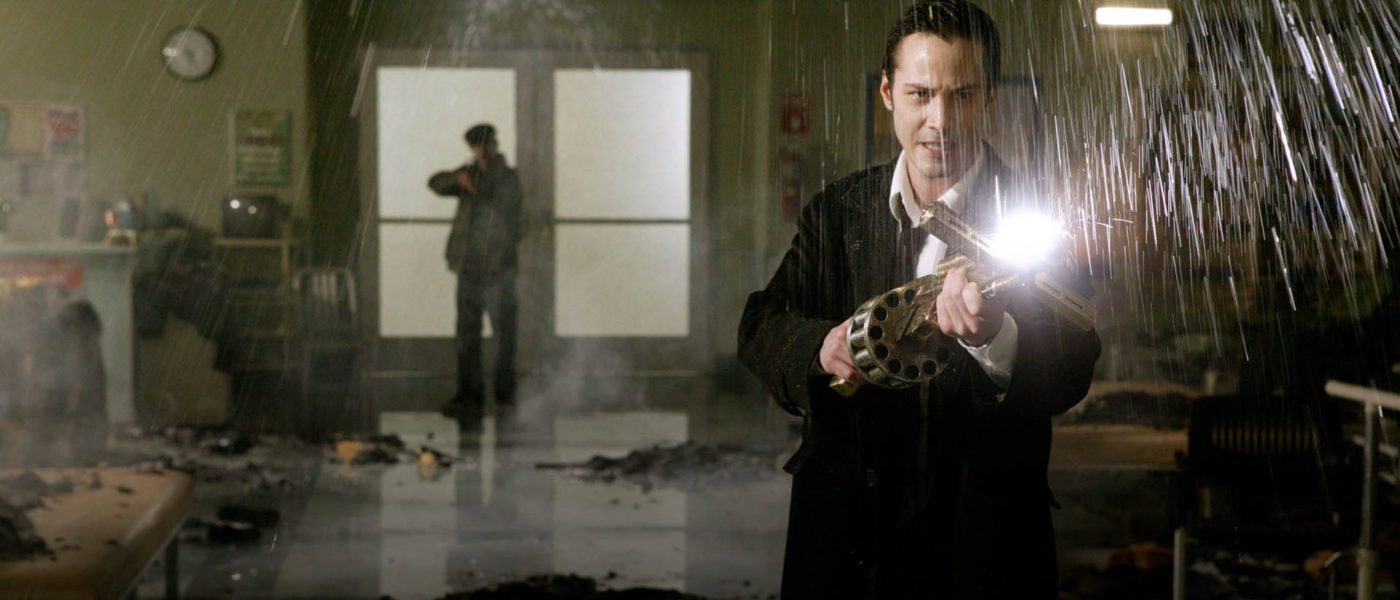Constantine Was A Risk That DC Needs To Keep Taking
The life of a DC fan is riddled with more ups and downs than a pathological liar’s polygraph results.
As it stands, the hope for any stability in Warner Bros.’s films continues to be snuffed out unless your name rhymes with Scatman. Especially if the nagging temptation to copy the Marvel formula continues to take center stage with no sense of shame.
This miserable period of creative bankruptcy only fuels nostalgia that longs for a simpler time in DC’s silver-screen journey where individual stories were prioritized over overarching plot lines.
The year 2005 was in a chokehold, ranging from the high-strung energy of Linkin Park to the wave of counterculture clothing from Hot Topic.
In Constantine, the agreement between God and Lucifer to make Earth a neutral zone is in jeopardy.
The movie, which revolves around a cynical exorcist/detective caught in a battle between angels and demons, embraced its zeitgeist.
Today, it’s safe to say the film is a product of a bygone era.
The profuse edginess of the film, which caught lightning in a bottle, was something other films in its generation failed at.
This is largely due to Keanu Reeves’ performance as John Constantine and the film’s visual style.
And let’s be honest with ourselves, you might think you’re cool, but you’ll never be “Keanu Reeves putting out a cigarette in a pool of his own blood” levels of cool.
Reeves has caught flack during his career for playing goofballs or stoic everyman characters. However, through John Constantine he blends that stoicism with apathetic sarcasm to create an anti-hero with a chip on his shoulder.
It also helps that Reeves is a very likable actor in Hollywood, making the audience prone to attach to him.
The doom and gloom atmosphere of Los Angeles makes Constantine a theological neo-noir hybrid—similar in composition to Se7en and Memento—but with a superhero fantasy twist.
For instance, Midnite’s Club showcases the sleazy underbelly of angels and demons that feels like a rave constructed by a sadist.
Even then, its graphic coup de grâce is its portrayal of Hell as a war-torn nuclear wasteland version of Earth where residents are crammed together with no room for survival.
Despite poor pacing and misuse of supporting characters, Constantine’s positives outweigh its shortcomings, with audiences welcoming John Constantine’s struggles to remain sane in a world teetering on total annihilation.
With a budget of $70-100 million, the DC film grossed around $231 million worldwide, giving it a positive revenue return of at least $131 million.
What does this mean? That effort equals effectiveness.
The film succeeded because it created something worthwhile for its intended audience. For some reason, they failed to notice the blueprint that saved them from suffering.
It doesn’t have to be that way. DC has time to distance itself from Marvel and champion its style of giving its second-tier characters a theatrical release.
Is it a risk? Yes. But that’s the thing about risks. Sometimes, they pay off.
Click here to subscribe to our bi-weekly newsletter, The Hammerhead. For news tips, contact us at mdc.thereporter@gmail.com.

